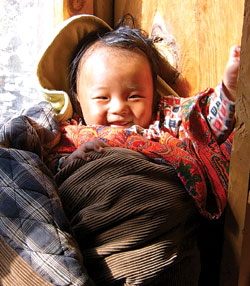|
|
In the western tarai districts, there is a silent malnutrition and wasting epidemic brewing. Health workers say the cause is not lack of food but faulty feeding habits and lack of awareness.
"Mothers here don't know how to feed their children. They only give them rice and milk, which deprives the kids of protein and other essential nutrients," says Punam Singh Adhikari, who works at the centre.
The Nepalganj nutritional centre, funded by the Nepal Youth Opportunity Foundation (NYOF) and jointly managed by the Banke District Hospital and Saathi, a women's charity, is the only one of its kind in western Nepal. It treats hundreds of malnourished children from Banke and surrounding districts. But most importantly, the centre also teaches mothers that judicious use of common food is the best defence against malnutrition.
"Mothers are surprised that their babies still waste away even though they feed them rice and ghee," says nurse Saraswati Acharya. "It takes a while for them to learn that the kids need protein which can be had in common food such as legumes and meat."
A malnourished child presents with severe wasting, low weight, has sunken eyes, pale skin and discoloured hair. The child almost certainly dies if left untreated, even though the treatment is simple, and prevention is even simpler. All it requires, say health workers, is a little awareness among the parents that children need not just rice and milk but also greens and protein.
|
|
| A PICTURE OF HEALTH:A well-fed baby in Manang |
Lack of a balanced diet, proper sanitation and care make Kanchanpur an appalling district for children's health. A recent assessment study by UNICEF in Kanchanpur found that \'21 percent of children are afflicted with wasting, an indicator of acute general malnutrition.\' The study further found that the prevalence rate is almost twice the national average found in the Demographic Health Survey conducted in 2001.
"It's not because families can't feed their children," says Nursing Inspector at the Mahendranagar hospital Indudhir Paudyal. "There is enough food that most parents can afford, but lack of a balanced diet is causing this problem."
There is hope on the horizon. Just as in Banke, the NYOF is funding a nutritional centre in Kanchanpur too. A new building is being erected at the zonal hospital to treat the children. "We will be providing both treatment as well as awareness programs for mothers," says Som Paneru, NYOF's executive director. "If we can only educate the mothers that the normal food they eat is good enough for children, then we will have half won the battle against malnutrition."




